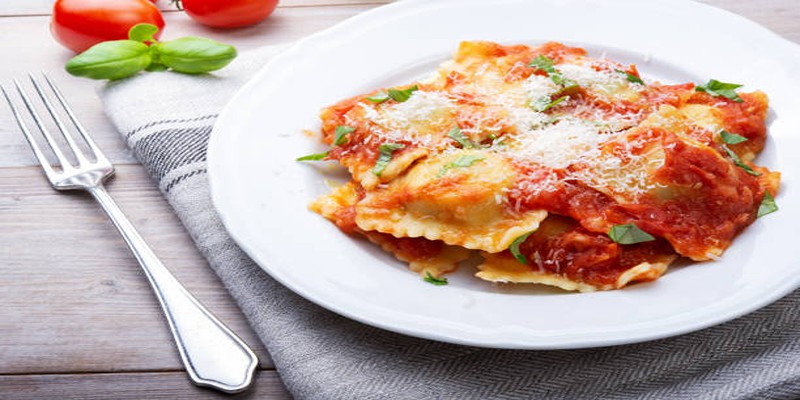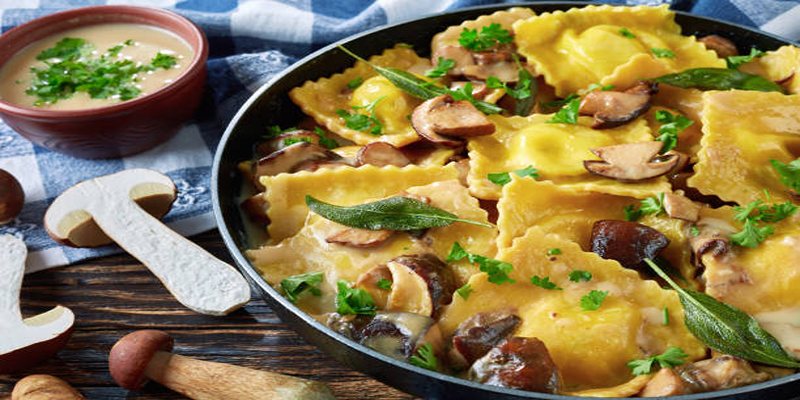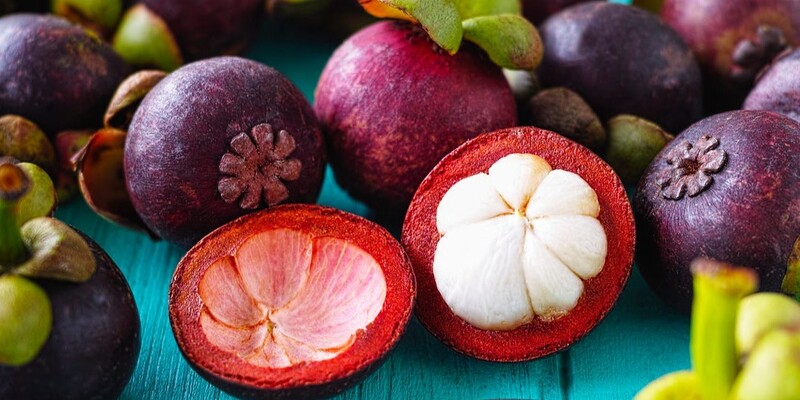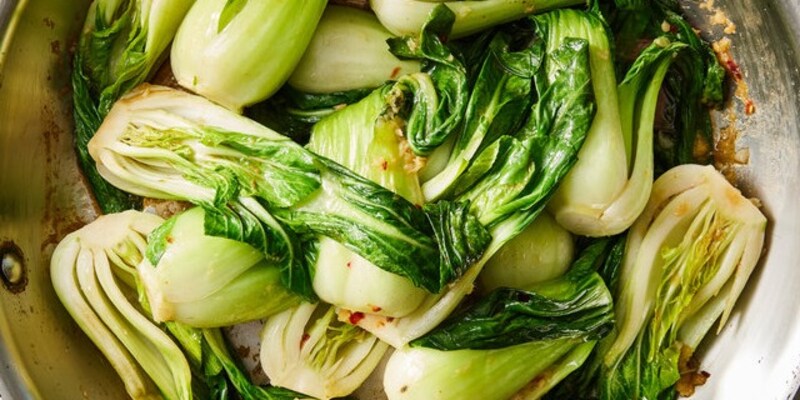Cooking ravioli, whether frozen or fresh, doesn't have to be a daunting task. In fact, with just a few easy techniques, you can transform these little pasta pockets into mouth-watering dishes that your family and friends will love. This guide will walk you through simple yet effective methods for preparing both frozen and fresh ravioli, ensuring they come out perfectly cooked every time. From selecting the right ingredients to mastering the art of boiling and saucing, we've got you covered. So, whether you're an experienced cook or a kitchen novice, these tips will help you create delicious ravioli dishes with minimal fuss and maximum flavor. Let's dive in and explore the joy of cooking ravioli!
Choosing the Right Ingredients
The key to making delicious ravioli dishes is using high-quality ingredients. For frozen ravioli, look for brands that use fresh, natural ingredients without added preservatives or artificial flavors. If you have the time and resources, making your own fresh ravioli from scratch can also elevate the taste of your dish even more. Use a simple dough recipe with flour, eggs, and water, and fill it with fresh cheese, meat or vegetable filling for a truly homemade meal.
Preparing Frozen Ravioli

Frozen ravioli is a convenient option for quick and easy meals. Here are some tips to ensure they come out perfectly cooked every time:
- Do not thaw: Frozen ravioli should be cooked directly from the freezer, without any need for defrosting. Thawing can cause the pasta to stick together and result in uneven cooking.
- Use a large pot of salted water: Bring a large pot of water to boil before adding in the frozen ravioli. For every four quarts of water, use about 1 tablespoon of salt.
- Add ravioli carefully: Gently add the frozen ravioli to the boiling water, making sure not to overcrowd the pot. This will prevent them from sticking together and ensure even cooking.
- Cook for recommended time: Frozen ravioli generally takes about 4-6 minutes to cook. Follow the instructions on the package for specific cooking times.
- Test for doneness: To check if the ravioli is cooked, use a slotted spoon or tongs to remove one piece from the boiling water and cut it open. The pasta should be soft, with no raw dough in the center.
- Drain carefully: Once done, gently remove the ravioli from the pot using a slotted spoon. Avoid pouring them into a colander as they can easily break apart.
- Toss in sauce: Transfer the cooked ravioli to a pan with your desired sauce and toss gently to coat evenly. Cook for an additional minute or two until heated through, and it's ready to serve!
Alternative cooking methods for frozen ravioli:
- Baking: For a crispy option, try baking your frozen ravioli instead of boiling. Arrange the frozen ravioli in a single layer on a greased baking sheet and bake at 400F for about 15-20 minutes, or until golden brown and heated through.
- Air frying: Another quick and easy way to cook frozen ravioli is by air frying them. Preheat your air fryer to 375F, place the frozen ravioli in a single layer in the basket, and cook for about 7-8 minutes, flipping once halfway through.
Preparing Fresh Ravioli
Fresh ravioli has a shorter cooking time compared to frozen and requires more gentle handling. Here are some tips for preparing fresh ravioli:
- Use a large pot of salted water: Just like with frozen ravioli, use a large pot of boiling, salted water. The ratio of water to salt should be about 4 quarts to 1 tablespoon.
- Add ravioli carefully: As fresh pasta is more delicate than frozen, it's important to add them gently to prevent them from breaking apart.
- Cook for recommended time: Fresh ravioli cooks much faster than frozen and usually takes only 2-3 minutes. Keep an eye on them and test for doneness frequently.
- Be careful when draining: As fresh pasta is more delicate, it's important to drain it carefully using a slotted spoon or gently pouring it into a colander.
- Toss in sauce immediately: Once drained, transfer the ravioli to a pan with your desired sauce and toss gently to coat. As fresh pasta tends to stick together more easily, it's essential to toss them immediately after cooking.
Alternative cooking methods for fresh ravioli:
- Sauting: For a crispy and flavorful option, try sauting your fresh ravioli in a pan with some olive oil or butter. Cook for about 3-4 minutes on each side until golden brown and crispy.
- Grilling: Yes, you can even grill your fresh ravioli! Preheat your grill to medium heat, brush the ravioli with olive oil, and grill for about 2-3 minutes on each side until heated through.
Sauce Pairings and Serving Suggestions

The possibilities for sauces and toppings to pair with ravioli are endless. From classic marinara or alfredo sauce to more creative options like pesto or brown butter sage sauce, there's a flavor combination for everyone. Here are some serving suggestions to elevate your ravioli dish even more:
- Add protein: For a heartier meal, add some protein like chicken, shrimp, or sausage to your sauce.
- Sprinkle with herbs: Fresh herbs like basil, parsley, or thyme can add a burst of freshness and flavor to your dish.
- Top with cheese: Grated Parmesan, shredded mozzarella, or crumbled feta can add a delicious cheesy element to your ravioli dish.
- Serve with a side: Pair your ravioli with a simple side salad or some crusty bread for a complete meal.
Troubleshooting Common Issues
- Ravioli sticking together: This can happen if the ravioli is cooked for too long or not drained carefully. To prevent this, make sure to cook them for the recommended time and drain gently using a slotted spoon.
- Sauce separating: If your sauce is separating and becoming oily, it may be due to overheating or adding cold pasta to hot sauce. To prevent this, make sure to toss the ravioli in the sauce immediately after draining and turn off the heat before adding them in.
- Undercooked ravioli: If the ravioli is undercooked, it will be tough and chewy. Make sure to follow the recommended cooking time and test for doneness frequently.
- Overcooked ravioli: Overcooked ravioli can become mushy and fall apart easily. Keep an eye on them while cooking and remove from heat once they are tender but still hold their shape.
Conclusion
Ravioli is a versatile and delicious pasta dish that can be enjoyed in many ways. Whether you're cooking with frozen or fresh ravioli, using one of the alternative cooking methods, or trying out different sauces and toppings, there's no wrong way to enjoy this tasty meal. Just remember to handle the pasta gently, follow recommended cooking times, and get creative with your flavor combinations.












